Sunday 11 January 1942
 |
| "Kuala Lumpur, Malaya, January 11, 1942. Japanese troops advance through the streets during the invasion of the Malayan Peninsula which culminated in the surrender of all British forces and occupation of the British naval base on Singapore Island." Australian War Memorial 127892. |
Battle of the Atlantic: Unternehmen Paukenschlag (Operation Drumbeat, or "roll of the kettledrums"), a U-boat offensive off the coast of the United States, scores its first victory on
11 January 1942 when U-123 (Kptlt. Reinhard Hardegen), on its seventh patrol out of Lorient, torpedoes and sinks a ship about 125 nautical miles (232 km, or 144 miles) southeast of Nova Scotia. The victim is 9076-ton British freighter Cyclops. Hardegen puts one torpedo into Cyclops near the funnel, but it does not sink and some of the crew even reboard it. However, U-123 lurks nearby and pumps another torpedo into Cyclops that splits it in two. It sinks within five minutes, taking 39 crew members, 48 passengers, and one gunner with it. There are 56 crew survivors (including Master Leslie Webber Kersley), six gunner survivors, and 31 passengers who survive and are picked up by HMCS Red Deer (J-255).
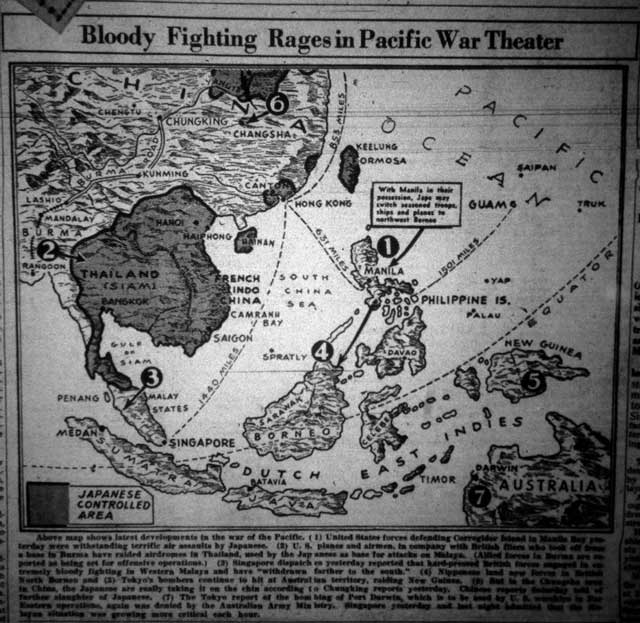 |
| Map of fighting in the Pacific in the Virginia-Pilot of 11 January 1942. It shows the major conflicts in the Philippines, the Malay Peninsula, and other hot spots. |
The sinking of the Cyclops opens a new phase in the Battle of the Atlantic. Admiral Karl Dönitz has sent five U-boats to the far side of the Atlantic. These are:
- U-125 (Kptlt. Folkers)
- U-123 (Hardegen)
- U-66 (Zapp)
- U-130 (Kals)
- U-109 (Bleichrodt)
in that order. It has taken U-123 about two weeks to score the first of many victories of Operation Drumbeat. While the U-boat commanders are under orders to only attack significant targets like cruisers or a battleship until they reach the United States, these orders are interpreted very liberally by captains who are hungry for victories. Because of the easy pickings along the eastern coast of the United States, this is known as the beginning of the second "Happy Time" for the U-boats, the first having lasted from July 1940 to April 1941.
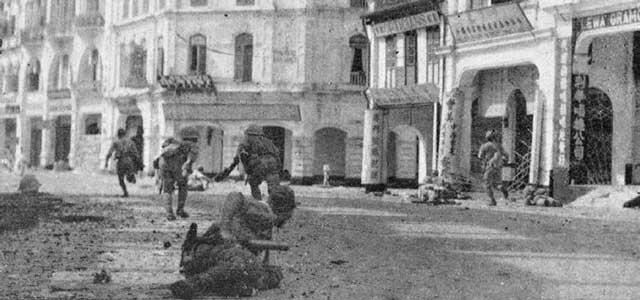 |
| Japanese troops advancing into Kuala Lumpur, 11 January 1942. |
Battle of the Pacific: The Japanese on the Malay Peninsula continue advancing south in pursuit of the fleeing Commonwealth troops. They move quickly from Serendah, about 26 km north of Kuala Lumpur, and enter the take the capital of the Federated Malay States, a British protectorate. The Japanese take possession of a fairly intact airfield, large quantities of supplies, burning oil tanks, and brand new maps of Singapore found in a railway car. The capture of KL serves as a tonic for Japanese morale, which has been taking a beating due to the hard trek down the peninsula (many people only take into account the hardships of British troops, but the Japanese troops are under strain, too).
While the British have abandoned Kuala Lumpur, there is some scattered fighting. Some Allies are taken prisoner and subsequently tortured to death in Pudo Jail. The Japanese quickly take over all of the government and public buildings use it as their own administrative center for the region. The British and Indian troops beat a quick retreat to Johor and plan on fighting a desperate battle to protect Singapore from invasion. Japanese forces (2500 men in the Combined Sasebo SNLF) also land at Manado (also spelled Menado) on the Minahasa peninsula on the northern part of the island of Celebes (now known as Sulawesi). They quickly occupy Manado town and prepare to advance toward Kakas on the 12th. The Sasebo 2nd SNLF lands at Kema and advances toward Kakas from the opposite direction.
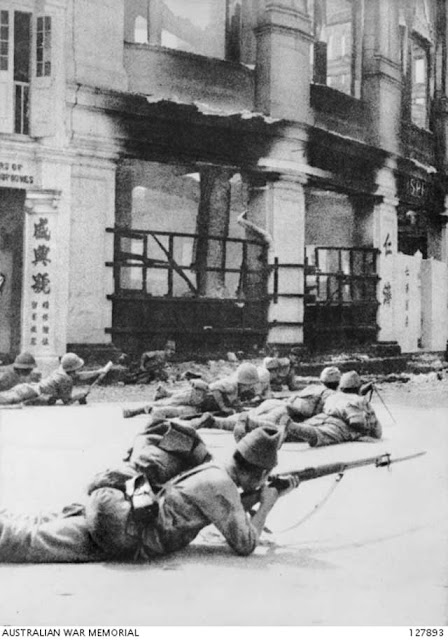 |
| "Kuala Lumpur, Malaya, January 11, 1942. Japanese troops take up a position in the streets during the invasion of the Malayan Peninsula which culminated in the surrender of all British forces and occupation of the British naval base on Singapore Island." Australian War Memorial 127893. |
Imperial Japan is finally ready to attack the Netherlands East Indies, so Japan declares war on the Netherlands (which already declared war on Japan) and lands troops at Tarakan Island in northeastern Borneo at midnight. The Japanese Right Wing Unit from the Sakaguchi Detachment lands on the east coast of Tarakan, while the 2nd Kure Special Naval Landing Force follows soon thereafter. Late in the day, the Dutch submarine K-X,[1] the patrol boat P-1, and the civilian motor launch Aida all manage to leave Tarakan. However, Dutch minelayer Prins van Oranje is not so lucky and is sunk by Japanese destroyer Yamakaze (Lt. Cdr Shuichi Hamanaka) and patrol boat P-38. Dutch airplanes based at airfield Samarinde II in eastern Borneo fly missions against the invading Japanese that have little impact on events.
US Navy aircraft carrier USS Saratoga (CV-3) is cruising about 420 nautical miles (780 km, 480 miles) southwest of Pearl Harbor on 11 January 1942 toward a rendezvous with
USS Enterprise when Japanese I-6 torpedoes it. The torpedo blast floods three of Saratoga's boiler rooms, reducing her speed to a maximum of 16 knots (30 km/hour, 18 mph). Six crewmen perish. Saratoga returns to Pearl Harbor and arrives there on the 13th. The final report on the incident is issued on 15 November 1942 and concludes that Japanese torpedoes are not, as commonly believed, more destructive than American torpedoes: "[The damage] was little if any more than might be expected from one of our submarine torpedoes carrying 500 lbs of explosive."
The attack keeps Saratoga out of two critical battles, the Battle fo the Coral Sea and the Battle of Midway. However, it returns to service just after the latter battle when the U.S. Navy carrier fleet needs it.
Battle of the Mediterranean: Early in the day, the South African 2d Division of 30 Corps, British Eighth Army, attacks Sollum. There is a sharp but brief battle that results in the capture of the Axis fortress early on the 12th. This is one of several Axis outposts along the Egyptian border that have been isolated by Operation Crusader. Lieutenant General Erwin Rommel's Afrika Korps troops are still being chased to the west at El Agheila and thus the Sollum troops have had no hope of relief. The fall of Sollum also isolates the heavily fortified Halfaya position, which now has no access to the sea. The Italian troops there are determined to hold out despite being very short of food and water. However, their eventual capitulation also is inevitable unless Rommel pulls off a miracle.
 |
| "Officers and men of 832 Squadron descending in the lift after having the Squadron photograph taken." This photo was taken on board HMS Victorious on 11 January 1942. © IWM (A 7075). |
Eastern Front: In the Crimea, Soviet 51st Army prepares to deploy its two rifle divisions at the front on the Parpach Narrows. The Germans, meanwhile, have the 46th Infantry Division, the 170th and 132nd Infantry divisions, two battalions of the 72nd Infantry Division, the Romanian 18th Infantry Division, and around five StuG III assault guns in position along the line. They are preparing for an attack on the Soviet forces as soon as possible.
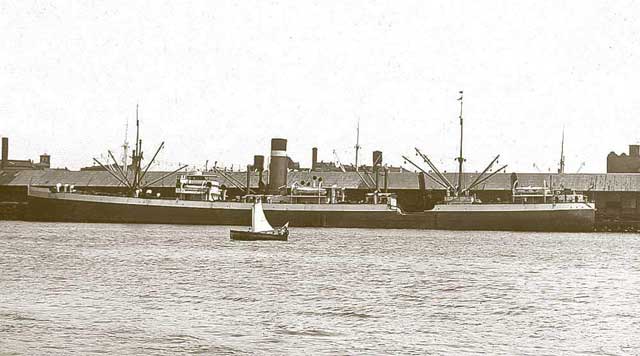 |
| SS City of Pittsburgh, a 7377-ton British freighter, runs aground at Great Pass, Alexandria Harbor on 11 January 1942 and breaks its back. The ship is a total loss. The ship was on a routine cargo mission from Montreal to Alexandria with a cargo of food and munitions. There are no casualties. |
Around Moscow, operations are still paralyzed by a brutal blizzard that began late on the 9th. One of the Red Army objectives is to cut the railroad line that runs parallel to the front between Vyazma and Rzhev, and they are approaching Sychevka, a small town in the middle of the railway line, throughout the day. Sychevka also happens to be the headquarters of the German Ninth Army, where General Adolf Strauss knows he has very little chance of holding out. There is no possibility of the large German base at Rzhev holding out for long if it is deprived of supplies that arrive by train through Sychevka, so, at this moment, Sychevka is the most critical spot on the entire Eastern Front.
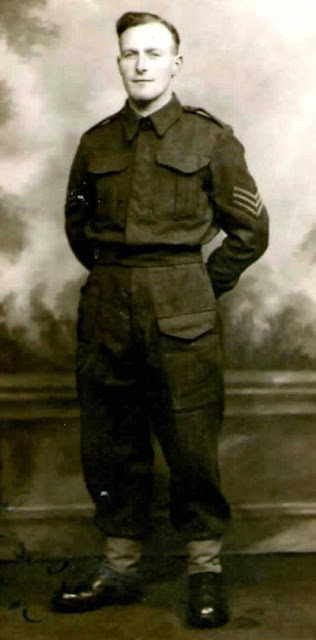 |
| Paratrooper Sgt. Brian Quinn, 11 January 1942. |
Army Group Center commander Field Marshal Guenther von Kluge also is very worried. He arrives at Adolf Hitler's Fuehrer Headquarters in Rautenberg by plane and quickly secures an audience with Hitler. He pleads for permission for further withdrawals, but Hitler has taken heart from the cessation in operations due to the weather. He refuses to talk about withdrawals and instead urges von Kluge to resist "every day, every hour" because "all the acclaim" would accrue to Kluge if he managed to hold the front.
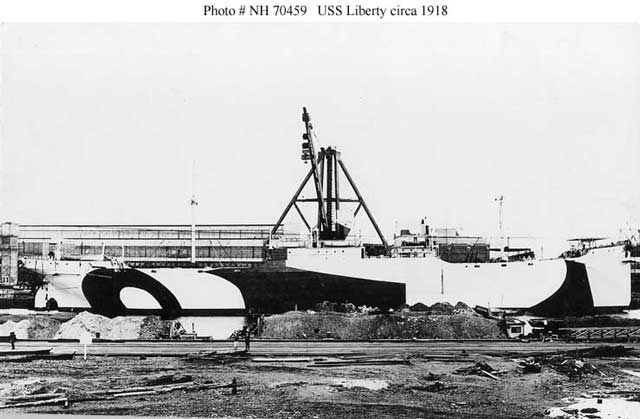 |
| USAT Liberty (6119 tons), shown, is sunk on 11 January 1942 by Japanese submarine I-66 off Lombok. It is carrying a cargo of railway parts and rubber. US destroyer USS Paul Jones (DD-230) and Dutch destroyer HNLMS Van Ghent try to tow Liberty to Singaraja, but they finally give up and beach Liberty on the eastern shore of Bali at Tulamben. The cargo was later salvaged, but the ship remains in that approximated location to this day (pushed slightly offshore in shallow water by lava from a volcano). It is a favorite spot for divers who can make it to Liberty's remote location. |
Partisans: The Battle of Dražgoše that began on 9 January 1942 ends after the partisans in the village disappear into the countryside. The victorious Germans execute 35 male civilians, some of whom may be partisans but many of whom likely are not. The Germans also loot houses and then set the entire village on fire. All survivors of the village are sent to concentration camps. The partisans have established a new base at the Mošnje Pasture (
Mošenjska planina), and the Germans prepare to attack them in a couple of days. The Battle of Dražgoše remains a controversial incident because there are conspiracy theories that contend that the partisans actually wished to punish the inhabitants of the village and not the Germans by launching an attack from there. Everyone in the region knows the brutal methods used by the occupying forces against areas that rebel and the Germans have acted true to form with their destructive and deadly reprisals.
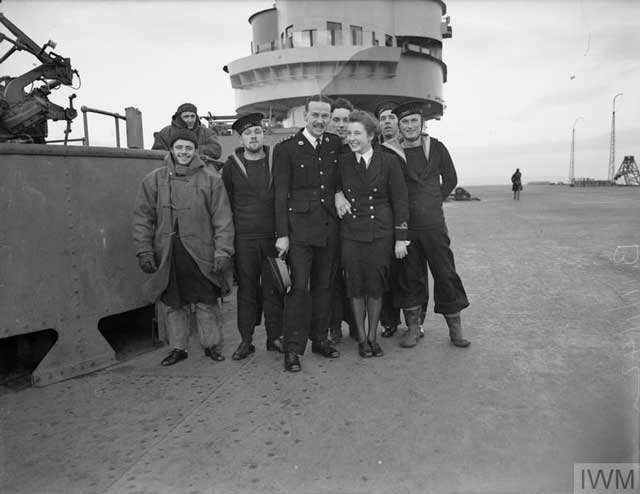 |
| "Captain H W Kirby and his fiancee Sally Reyne, with a group of well-wishers on the flight deck of HMS VICTORIOUS." Reyne is the daughter of Rear Admiral (Ret'd) C.W. Reyne, while Kirby commands the Royal Marines on board Victorious. 11 January 1942. © IWM (A 7086). |
1942
January 1942
January 1, 1942: Declaration By United Nations
January 2, 1941: Manila Falls to Japan
January 3, 1942: ABDA Command Announced
January 4, 1942: MacArthur on His Own in the Philippines
January 5, 1942: Soviets Plan General Offensive
January 6, 1942: US Army in Europe
January 7, 1942: Soviet General Offensive Opens
January 8, 1942: Hitler Sacks Hoepner
January 9, 1942: Battle of Dražgoše
January 10, 1942: Building the Jeep
January 11, 1942: Japan Takes Kuala Lumpur
January 12, 1941: Rommel Plans Counterattack
January 13, 1942: First Ejection Seat Use
January 14, 1942: Operation Drumbeat First Sinking
January 15, 1942: U-Boat Off NYC
January 16, 1942: Carole Lombard Crash
January 17, 1942: British Take Halfaya Pass
January 18, 1942: Soviet Paratroopers in Action
January 19, 1942: FDR Approves Atomic Bomb
January 20, 1942: The Wannsee Conference
January 21, 1942: Parit Sulong Bridge Battle
January 22, 1942: Parit Sulong Massacre
January 23, 1942: Japan Takes Rabaul
January 24, 1942: Battle of Makassar Strait
January 25, 1942: Kholm Surrounded
January 26, 1942: GIs Land in Europe
January 27, 1942: Battle of Endau
January 28, 1942: Rommel Takes Benghazi
January 29, 1942: First US Coast Guard Ship Sunk
January 30, 1942: Singapore Isolated
January 31, 1942: Army Group South Averts Disaster
2020




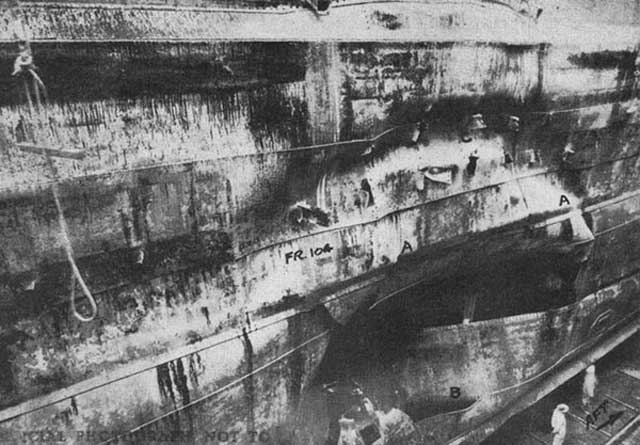






No comments:
Post a Comment